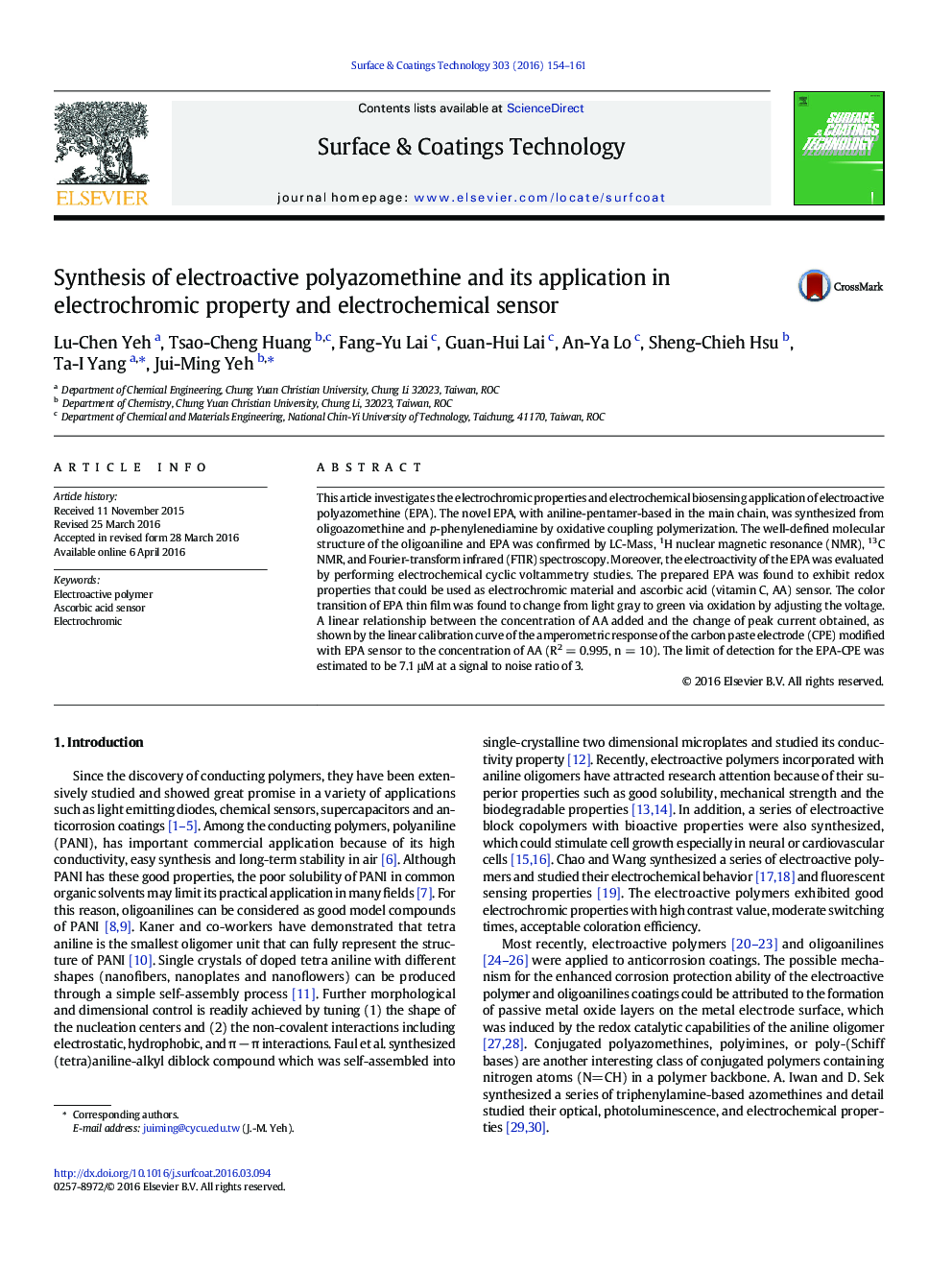| Article ID | Journal | Published Year | Pages | File Type |
|---|---|---|---|---|
| 1656264 | Surface and Coatings Technology | 2016 | 8 Pages |
•Electroactive polyazomethine (EPA) was synthesized by oxidative coupling polymerization.•The prepared EPA was found to exhibit redox property that could be used as electrochromic material and ascorbic acid sensor.•Color transition of the EPA thin films was changed reversibly from light, to green and to dark gray.•The sensitivity and the detection limit for the EPA-CPE were 24.2 μA mM-1 and 7.1 μM, respectively.
This article investigates the electrochromic properties and electrochemical biosensing application of electroactive polyazomethine (EPA). The novel EPA, with aniline-pentamer-based in the main chain, was synthesized from oligoazomethine and p-phenylenediamine by oxidative coupling polymerization. The well-defined molecular structure of the oligoaniline and EPA was confirmed by LC-Mass, 1H nuclear magnetic resonance (NMR), 13C NMR, and Fourier-transform infrared (FTIR) spectroscopy. Moreover, the electroactivity of the EPA was evaluated by performing electrochemical cyclic voltammetry studies. The prepared EPA was found to exhibit redox properties that could be used as electrochromic material and ascorbic acid (vitamin C, AA) sensor. The color transition of EPA thin film was found to change from light gray to green via oxidation by adjusting the voltage. A linear relationship between the concentration of AA added and the change of peak current obtained, as shown by the linear calibration curve of the amperometric response of the carbon paste electrode (CPE) modified with EPA sensor to the concentration of AA (R2 = 0.995, n = 10). The limit of detection for the EPA-CPE was estimated to be 7.1 μM at a signal to noise ratio of 3.
